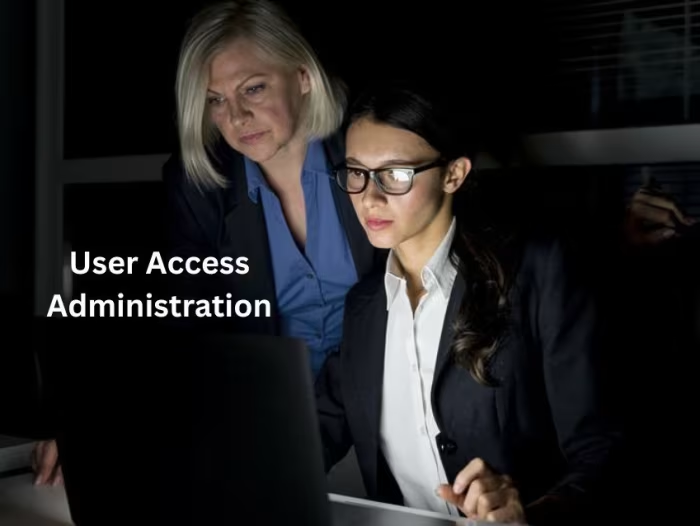Resource / Online Journal
Essential Guide to System Access Management
This article explores practical strategies, frameworks, and a roadmap for building resilient system access management, reducing identity-driven risks, ensuring compliance, and enabling secure, future-ready organizations.
Published on Sep 30, 2025

One unauthorized access can put your entire business at risk. Cloud apps, hybrid work, and stringent restrictions have made system access management a necessity rather than a luxury. Attackers are targeting identities because it’s the easiest way in, and compliance rules are only becoming tougher.
For leaders, this isn’t just about passwords or tools. It’s about having a clear strategy to access control who gets access, when, and why. In this article, we’ll share practical steps to build a strong access management system plan that keeps your systems secure and compliant.
User Access Rights & Permissions
Managing user access to ensure restricting access to unauthorized individuals and granting user access rights only to authorized users at the appropriate time is the primary goal of system access management. It involves key steps like verifying user identity (authentication), assigning permissions through models like role based access control (RBAC) or attribute-based access control (ABAC), adding or removing users (provisioning), and monitoring their activities.
The user access management system has two core principles that guide this process:
- Least Privilege - Grant user accounts only the minimum access required to perform their duties.
- Just-in-Time Access - Only grant more user permissions or access privileges when necessary, then take them away.
Orphaned accounts, insider threats, privilege creep, and compliance failures are just a few of the major hazards. This can result from poor access management and lead to data breaches and fines.
Frameworks for an Effective Access Management System
Established frameworks like NIST, Zero Trust network access, and the CIS Controls provide a strong foundation for building effective identity and access management (IAM) strategies.
NIST emphasizes centralized identity verification, continuous monitoring, and least-privilege access. It guides organizations in defining policies, assigning roles, and selecting appropriate technologies for cloud and hybrid environments.
Zero Trust applies the principle of "never trust, always verify," requiring ongoing user authentication and context-based access decisions for all users and devices. Multi factor authentication, single sign-on (SSO) for secure access
CIS Controls provide practical safeguards for account provisioning, privilege management, and regular permission reviews to support compliance.
Modern frameworks incorporate automation and AI-driven adaptive access, enabling real-time risk analysis, automated provisioning, and rapid response to suspicious activity. These features reduce manual effort, enforce policies immediately, and deliver audit-ready compliance reports.
Access management should be integrated with your overall security posture and incident response plans. This approach enables faster detection, containment, and recovery from breaches, making security proactive instead of reactive.
Implementation Roadmap for CIOs, CISOs, and IT Managers
Building a strong system access management program isn’t just about technology; it’s about strategy, governance, and continuous improvement. Here’s a four-stage roadmap to guide you:
Stage 1: Assessment and Planning
Begin with a comprehensive inventory of all systems, applications, and identities, employees, contractors, partners, and machine accounts. Identify gaps such as orphaned accounts or excessive privileges. Use assessment to define policies aligned with business objectives and regulatory mandates like GDPR or HIPAA.
Stage 2: Design and Tool Selection
Establish clear role definitions and adopt scalable models like role based access control (RBAC) or ABAC. Select access management tools that enable automation, adaptive access, and robust auditing.
Stage 3: Deployment and Integration
Deploy in phases, prioritizing high-risk areas such as privileged accounts and critical applications. Integrate identity and access management (IAM) with HR systems, SIEM, and security monitoring for unified visibility.
Stage 4: Continuous Monitoring and Improvement
Access management is dynamic. Implement continuous reviews, automated recertifications, and anomaly detection. Leverage AI-driven analytics for proactive adjustments and policy optimization. Regularly update controls to address emerging threats and evolving compliance requirements.
Forward-looking organizations should work on access management solutions and combine automation, analytics, and governance to create adaptive IAM ecosystems, reducing risk, accelerating audits, and enabling business agility in an era of identity-driven threats.
Business Benefits and Success Metrics
Implementing effective identity access management delivers measurable business value. Automation and well-defined policies streamline provisioning and deprovisioning, reducing manual effort and accelerating onboarding, boosting productivity while lowering IT costs. Risk exposure drops significantly through timely removal of access, enforcement of least privilege, and behavioral analytics that detect anomalies before they escalate.
Compliance posture improves with consistent policy enforcement and audit-ready reporting, reducing the likelihood of fines and penalties.
To measure success, track metrics such as
- Reduction in orphaned accounts
- Average time to provision or revoke access
- Number of privileged access violations
- Closure rate of audit findings
Conclusion
Effective system access management depends on practical frameworks and a structured roadmap. For CIOs, CISOs, and IT leaders, prioritizing access management is a cornerstone of cybersecurity resilience and compliance. Partner with a cybersecurity solution provider like TechDemocracy to implement adaptive, future-ready solutions that secure identities, reduce risk, and keep your organization audit-ready.
Recommended articles


Master User access administration for Enterprise Security
Take Your Identity Strategy
to the Next Level
Strengthen your organization's digital identity for a secure and worry-free tomorrow. Kickstart the journey with a complimentary consultation to explore personalized solutions.